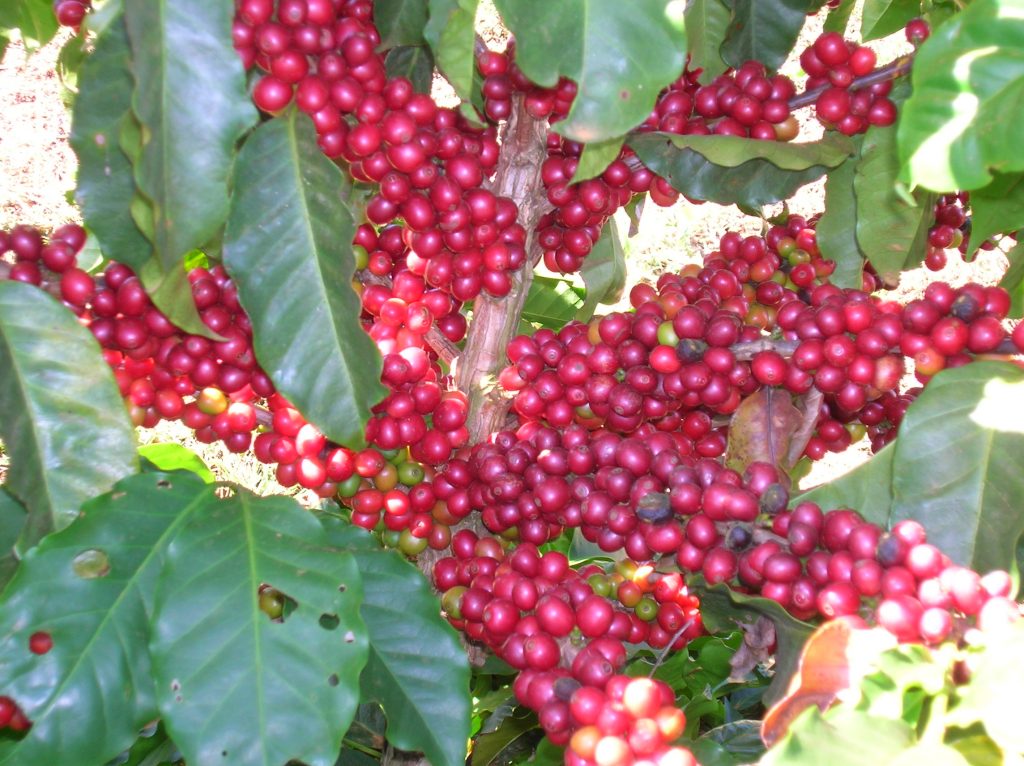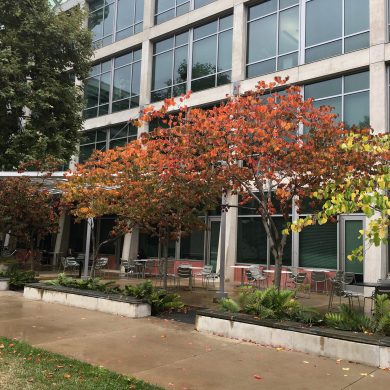BY PRANAV IDDAMSETTY | UTS STAFF WRITER | SQ ONLINE (2015-16)
Coffee: the college student’s best friend. As the beverage of choice for the sleep- deprived and energy deficient, coffee has found its way into the hands of people around the world. A Harvard study has shown that 54% of Americans over the age of 18 drink an average of 3.1 nine-ounce cups of coffee a day. People crave it so much that coffee shops have sprung up on every street corner, and it now forms a multi-billion dollar industry. It is so popular that in 2015 alone, around 8 billion kilograms of coffee beans were exported world wide. But as with all food and drink, there is a scientific explanation for why coffee is so loved. New research has shown that coffee has health benefits and can have an effect on lifespan. Coffee, and or more specifically, its main chemical component caffeine, also have some drawbacks. Coffee, the king of beverages, continues to captivate people as they explore its secrets and make it their own.

Before you find it in your Starbucks drink, coffee starts out as a bean. Due to their tropical nature, the beans only grow between latitudes of 10° North and 10° South, the so-called “Coffee Belt.” The coffee bean is originally harvested as a cherry from the tropical shrubs Coffea arabica and Coffea cenephora (more commonly known as Robusta). After harvesting, the bean can be processed in either a wet or a dry environment, each of which produces a different level of acidity and a different flavor. In the washed, or wet, processing method, the ripe cherries are separated based on their density in water, with the ripe cherries sinking to the bottom. The skin is partially removed and the beans are fermented in a controlled environment to fully remove the remainder of the skin. In areas where water is less available, the dry process is used. In the dry process, the ripe and semi-ripe cherries are separated and then laid out to dry for two to six weeks. During this time, the beans are regularly rotated for even drying. After processing, the beans are now in their raw form. To satisfy the palates of the wide range of coffee consumers, the raw beans are roasted in a variety of ways, which imbues the beans with different flavor profiles. All that’s left at this point is for the beans to be packaged and shipped, then prepared in a variety of methods for people’s enjoyment.

Though many drink coffee for the taste or the experience, a majority of consumers treasure coffee for its pick-me-up component, resulting from caffeine. Caffeine is among a class of molecules that mimics chemicals naturally found in the body. Caffeine is very similar in structure to a molecule called adenosine, which causes drowsiness. By binding to receptors that would normally be used by adenosine, the caffeine molecules prevent people from feeling sleepy, which manifests as a sudden boost of energy. Though this temporary surge is useful for many, overuse has been shown to lead to a “vicious cycle of restless sleep” (AARP) and anxiety.
Coffee has been found to have many positive health effects. Consuming coffee has been shown to reduce the risk of many types of cancers such as prostate, liver, and endometrial cancer. A recent report from the Harvard School of Public Health has shown that drinking three to five cups of caffeinated or decaffeinated coffee a day could lead to “a lower risk of death from Type 2 diabetes, cardiovascular disease, neurological diseases such as Parkinson’s disease, and suicide”. This leads to a longer lifespan for coffee drinkers. The reasons why coffee has such drastic effects are still unknown, mainly due to the lack of clinical trials. Coffee companies don’t need research to sell their product, so they don’t carry it out. People will buy it regardless.
Coffee has a power over people that they seldom are able to control. Americans spend an average of $40 billion annually on coffee alone. With all the research pointing to the benefits of drinking coffee, that may only go up. But, as with all things, moderation is the key to maintaining health and wellness.
http://https://www.youtube.com/watch?v=lYryKbPjm4s
[hr gap=”0″]
Sources:
- http://www.coffeechemistry.com/
- http://www.cnn.com/2012/08/18/health/coffee-health-benefits
- http://www.hsph.harvard.edu/news/multimedia-article/facts/
- http://www.health.harvard.edu/staying-healthy/harvard-study-moderate-coffee-drinking-associated-with-longevity
- http://www.ico.org/trade_statistics.asp
- http://www.aarp.org/health/healthy-living/info-10-2013/coffee-for-health.html
- https://www.yahoo.com/health/35-things-didnt-know-caffeine-135200552.html
- http://www.npr.org/sections/thesalt/2015/11/16/456191657/drink-to-your-health-study-links-daily-coffee-habit-to-longevity
- http://www.coolbreezebeverages.com/coffee
